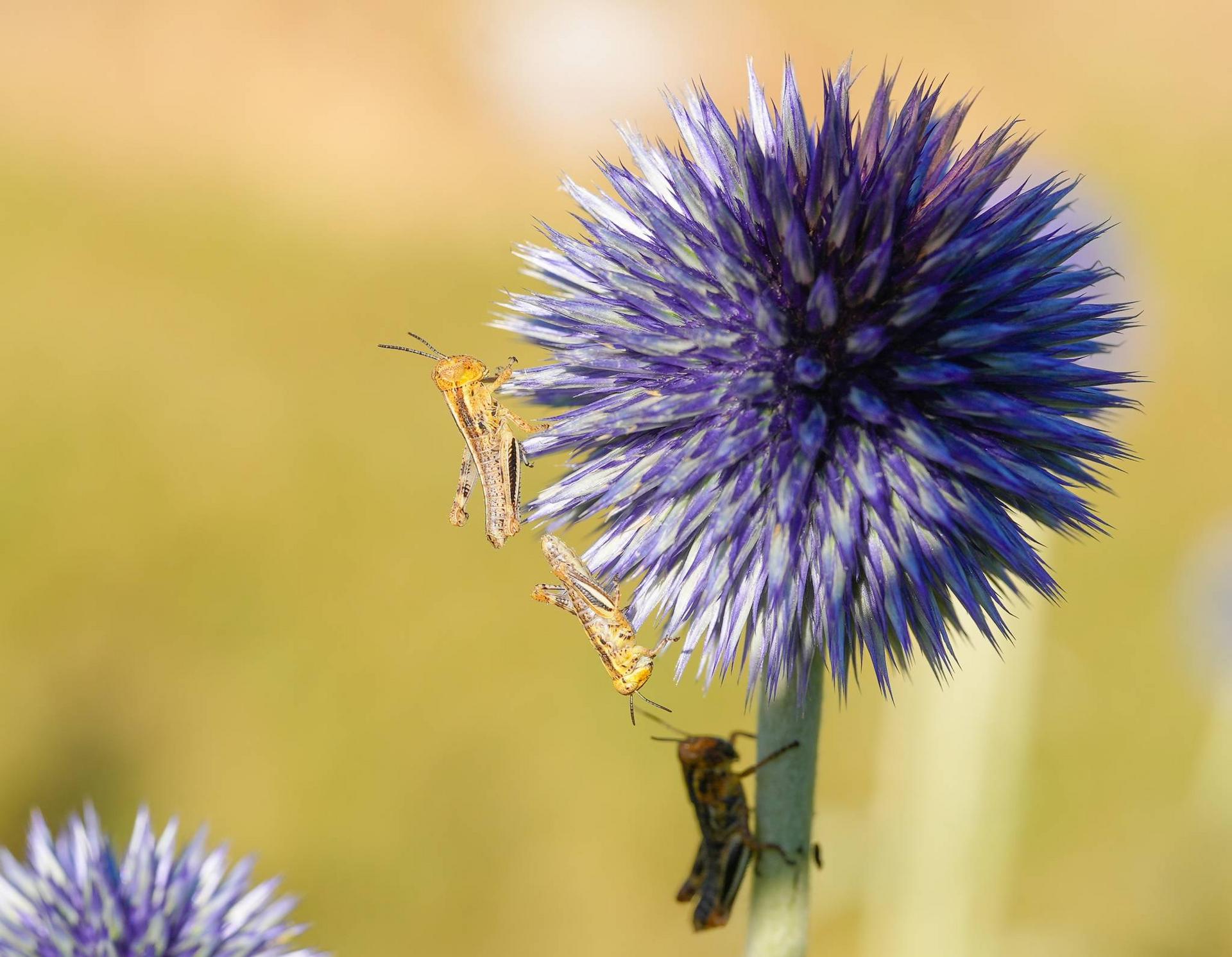USU Extension Press Release
Climate conditions affect grasshopper populations differently each season, and this year’s conditions made for extreme numbers. Grasshoppers spent the winter as eggs in the soil, unaffected by cold air temperatures. The unusual snowpack we had provided insulation against drying out and colder soils, which allowed for a higher number of eggs to survive and hatch. And now here we are, with what seems like apocalyptic numbers in some areas.
Most grasshopper species in Utah produce one generation per year. Eggs hatch under warm spring temperatures, and the grasshoppers develop through about five nymph stages before becoming winged adults.
Grasshoppers feed on agronomic crops, pasture rangelands, weeds, ornamental plants and vegetables. Their chewing mandible mouthparts wreak havoc as they tear away plant tissue and consume the foliage, flowers, fruits, seed heads and stems (essentially all above-ground parts). If populations are high enough, this feeding can lead to economic setbacks, and farmers in some areas are reporting economic loss due to grasshopper damage.
Consider these tips to help reduce growing grasshopper populations.
* Monitor for nymphs early in the season as they feed in weedy areas along fence lines and roadsides. When this vegetation dries up, they’ll move to farms and home gardens. This nymphal stage is also the prime time for management as they are less mobile and more susceptible to treatment.
* Manage grasshoppers using insecticides as concentrate sprays, dusts or baits. Unfortunately, popular organic bait products containing the microsporidium fungus Nosema locustae (e.g. , NoLo Bait and Semaspore) are in short supply or unavailable through most sources. Other bait products using active ingredients such as zeta-cypermethrin + bifenthrin, malathion, permethrin and carbaryl are labeled for grasshopper use in home gardens. Consult your local garden center about what products are currently in stock and verify that the target crop and grasshoppers are listed on the label.
* In small gardens, grasshoppers can be physically barred using row covers with insect netting or a lightweight spun-bond material. They can also be hand-removed (during early, cool mornings) and placed into soapy water. Natural predators such as birds, reptiles, mammals and other arthropods feed on grasshoppers, but unfortunately, not usually enough to mitigate damaging numbers.
For more in-depth information, check out this factsheet on grasshoppers, or see this video on grasshopper overview and management and this video on grasshopper control.


